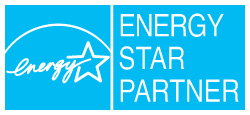 |
"Go
Green With Metal Roofing"
Did
you know.. Since
Metal Roofing is made from recycled material, it is 100% recyclable.
Metal roofing has an extremely long life. But, if a metal roof
ever needs to be torn off for any reason, it can simply go towards
making another roof. As opposed to spending approximately 300
years decomposing in a landfill, like asphalt shingles do when
they are torn off and thrown out.

|
An industry leader
in the fabrication of quality roofing and siding products, Rain Line Products
takes pride in putting its customers first. With a reputation built on
excellent service and dependability, Rain Line Products. is the company
you can always rely on for your residential roofing needs.
Traditionally, steel
roofing panels have been used mostly for commercial, industrial and farm
buildings. Today's technological advances in building materials have made
it both practical and economical to use pre-painted steel panels in virtually
all color combinations for your residential uses as well.

Energy Star® is a label that helps consumers identify products that save
them money and help protect the environment by saving energy, which is
usually generated by burning fossil fuels such as coal, oil and natural
gas.
Why choose Energy Star® reflective roofing for your building?
* Energy Star® qualified roof products saves money and energy. According
to the EPA, about $40 billion is spent annually in the US to air condition
buildings, one sixth of all electricity generated each year! Energy Star®
qualified roof products reduce the amount of air conditioning needed in
buildings, and can reduce energy bills by up to 50%.
* Energy Star® qualified roof products can help you downsize cooling
equipment! A reflective roof can reduce peak cooling demand by 10-15 percent.
As a result the home or building owner may be able to purchase a smaller,
more efficient, and less expensive cooling system.
* Energy Star® qualified roof products can help you decrease pollution
in urban areas! Reduced energy demand means less burning of fossil fuels,
which results in less pollution from power plants.
Also, Energy Star® qualified roofing products help to reduce the “heat
island effect,” in which dark, heat absorbing buildings and paved areas
make the air in urban areas hotter, and more smoggy.
| Federal Tax
Credits for Energy Efficiency: |
|
10 Things You Should Know
On February 17, 2009, President Obama signed a stimulus bill (The
American Recovery and Reinvestment Act of 2009) that made some
significant changes to the energy efficiency tax credits.
The highlights are:
1. The tax credits that were previously
effective for 2009, have been extended to 2010 as well.
2. The tax credit has been raised from
10% to 30%.
3. The tax credits that were for a specific
dollar amount (ex $300 for a CAC), have been converted to 30%
of the cost.
4. The maximum credit has been raised
from $500 to $1500 for the two years (2009- 2010).
5. Must be "placed in service" from January
1, 2009 through December 31, 2010.
6. Must be for taxpayers principal residence.
7. For record keeping, save your receipts
and the Manufacturer Certification Statement, OR for windows,
you can save the ENERGY STAR® label from your new windows.
8. Improvements made in 2009 will be claimed
on your 2009 taxes (filed by April 15, 2010) use IRS Tax Form
5695 (2009 version) it will be available late 2009 or early 2010.
9. If you are building a new home, you
can qualify for the tax credit for photovoltaics, solar water
heaters, small wind systems and fuel cells, but not the tax credits
for windows, doors, insulation, roofs, HVAC, or non-solar water
heaters.
10. All Energy Star® labeled metal roofs
qualify for the tax credit. The roofing must be expected to last
5 years or have a 2 year warranty.
|
|
Call
today for a FREE in-home consultation!
(336) 516-4719
|
|
|

